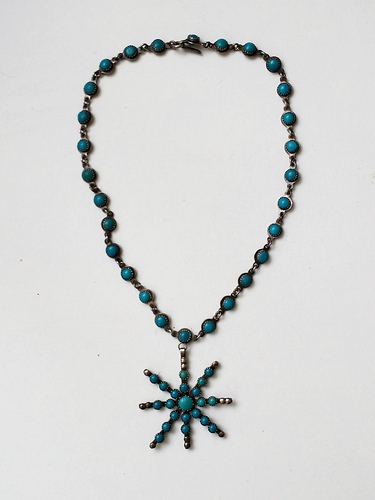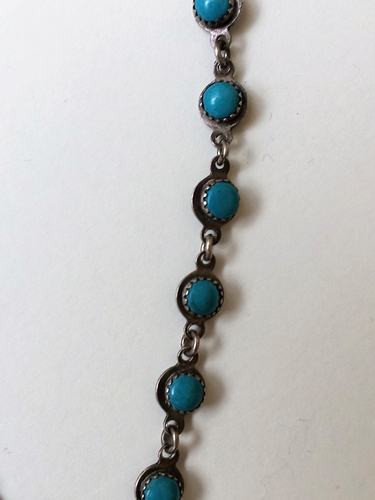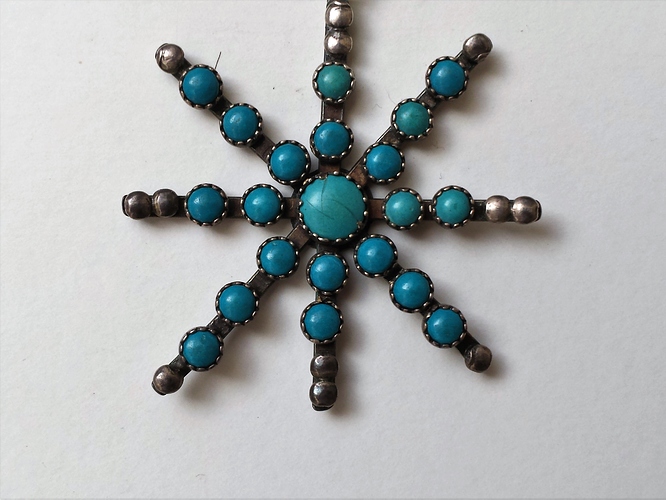Hello, to me it looks like Zuni, maybe from the 40ties or 50ties and it is a very unusual design and great snakeeye work. I have not seen this simple design in more recently Zuni work that is why I am thinking it is an older piece. But it is stamped Sterling and I have no idea from when on stamping a piece with Sterling sign became common. I am also unsure about the turquoise. I need your opinion if this is natural turquoise or if it is block turquoise. Also your opinion about the age and possible the name of a silversmith who did this design would be highly welcome.
I am by no means an expert, but I have bought a lot of turquoise jewelry over the years. I never saw the .925 stamp for silver until the late '90s, although there were artists who used it. There are still things stamped “sterling”, but now it’s more common to see the .925 stamp. So, in my opinion, most things stamped .925 were made before the '90s. Also, a lot of older pieces have no artist stamp. There is color variation from stone to stone, so that makes me think it is not block turquoise. Block turquoise usually looks fake because they tend to color it a deeper blue than most turquoise naturally is and there is no color variation. Block turquoise is plastic, so the easiest way to tell without damaging it is to tap it on your teeth. Another way to tell is to hold a match to it and see if it melts or turns brown. I don’t recommend this as it will ruin the tested stone. If your stone passes the tooth test, it still doesn’t mean it’s turquoise. It could be another stone, like Howlite that has been dyed. Even real turquoise is often dyed. It is an interesting piece, and block turquoise can have value depending on the piece. I would agree that this is probably from the '40s or '50s, but it could be from earlier. I doubt it would be from later than the '70s. It’s Navajo in style, but Navajos and Zunis often use each other’s techniques so it can be hard to tell. Zunis are known more for their stonecutting, and Navajos for their silver work. Zunis use the fine needlepoint stones and do a lot of close-fitting stone inlay. They don’t normally put silver between the stones of their inlay, whereas the Navajo do. Of course there are exceptions to every rule.
You definitely get some cool looking pieces. I showed this one to an old timer who has been in the business since the 1960s. He felt like it was something manufactured. Something like a Maisel’s in Albuquerque who worked Native craftsman. He puts this in the 1950 -60s time frame and doesn’t believe that to be real turquoise. Block has been around since the 1950s. Hope this helps.
Hello Jason, thanks for the effort. It is a cool piece but as you mentioned it just did not look “right”. What would be your suggestion regarding the value?
It has some age, it has a good luck. I would put it around $250.



